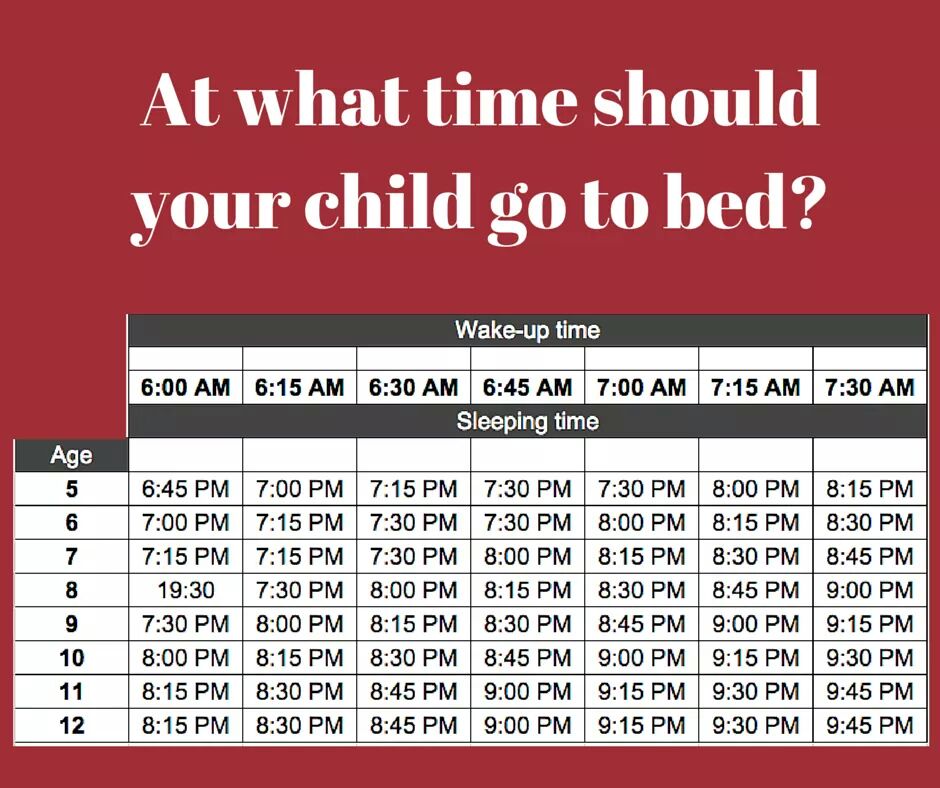Some mums are saying this chart is putting unnecessary pressure on parents, while others are swearing by it.
Science has proven that there are benefits for getting your children to go to bed early, including better health and wellbeing, and optimal performance at school.
What most studies on children’s sleep haven’t done, however, is tell you just what time your kid should actually go to bed. To help with this, Wilson Elementary, a primary school in Wisconsin, USA, has tried to prescribe a child’s sleep time based on their age and the time they usually wake up.
The bedtime chart, simply titled “At what time should your child go to bed?”, was posted on Wilson Elementary’s Facebook page by school teacher Stacy Karlsen, and has since been shared over 400,000 times.
“I didn’t make [the chart] up,” Stacy told Fox6 Milwaukee. “I found it coming across my personal page and I thought, Wow, this is super helpful.“
For children who are awake at six in the morning, the chart suggests those aged under nine be in bed by 7.30 pm (6.45 pm for five-year-olds and 7 pm for six-year-olds).
And while some parents have found the bedtime chart helpful, others have deemed it as creating extra pressure and being unrealistic—especially for working parents.

Source: Wilson Elementary
“A handy bedtime guide”
When we shared this chart with members of our Mums At The Table Facebook group, some mums were quick to agree with the chart, saying it reflects their own children’s bedtimes.
Naz Mac’s children, aged eight and 11, who wake up at 7.30 am, are even in bed at least an hour before the chart’s recommended bedtime.
Libby Hergenhan agrees, saying, “This chart looks about right for what my kids do.”
It’s also something new mums have found to be helpful. “I am totally following this,” Claudia Facuri, who has a 20-month-old, commented.
Claire Taylor also agrees with the guide, but with some caveats: “I am a firm believer that sleep is essential to a kid’s wellbeing, and so [are] routines. Therefore something like this is quite handy. If used as a guideline it’s great, but shouldn’t be used as a hard and fast rule as all kids are different.”
“This is just extra pressure”
Many mums, however, are finding that the chart failed to take into account different family schedules, as well as a child’s unique personality.
“I have five kids and as much as I try to stick to routine it doesn’t always happen,” says Amanda Johnstone. “I prefer to ignore things like this and just do what works for us on the day.”
Melanie Markmann agrees. “As someone who has a child that hasn’t been a good sleeper since day one, I feel like this is just extra pressure. I now know not to follow these types of tables and just follow my children’s cues. According to this table, my 12-month-old is sleeping like a five-year-old and my 2.5-year-old is sleeping like a six-year-old, and that’s after we have just completed a full week at [a parenting organisation that helps with children’s sleep issues].”
Lucinda Ramsay also found the bedtime chart to be unrealistic, believing it “pigeonholes kids” and adds “unnecessary pressure on parents to do things in a way that may not suit their child”.
The bedtime chart also does no favours for working parents, most of whom aren’t home till at least six in the evening, and those who do shift work. Mike Pegg, commenting on the original post by Wilson Elementary, commented, “I work 12-hour shifts. Going by this chart I would only see my children on weekends for the first six years of their lives. It’s unrealistic in today’s society for a lot of people.”
Bernadette Kasacek was scathing about many schools’ homework policy as well, stating, “Here’s an idea: Don’t give my child four hours of homework and then maybe they’d be able to go to bed on time.”
Where do you stand on the bedtime chart debate?
Is the bedtime chart a handy guide or yet another thing creating more pressure on time-poor parents?
Perhaps this is a good time to remember that official guidelines recommend the total hours of sleep children should get (and even that is a range), not what time they should go to bed. This means the bedtime chart could be used as a guideline if it suits your family, and even then, should be viewed more as a recommended window of time than a fixed rule.
And another thing experts agree on when it comes to bedtime? Consistency.
How helpful was this article?
Click on a star to rate it!
0 / 5. 0
Be the first to rate this post!
Melody Tan
Related posts
Subscribe
Receive personalised articles from experts and wellness inspiration weekly!

